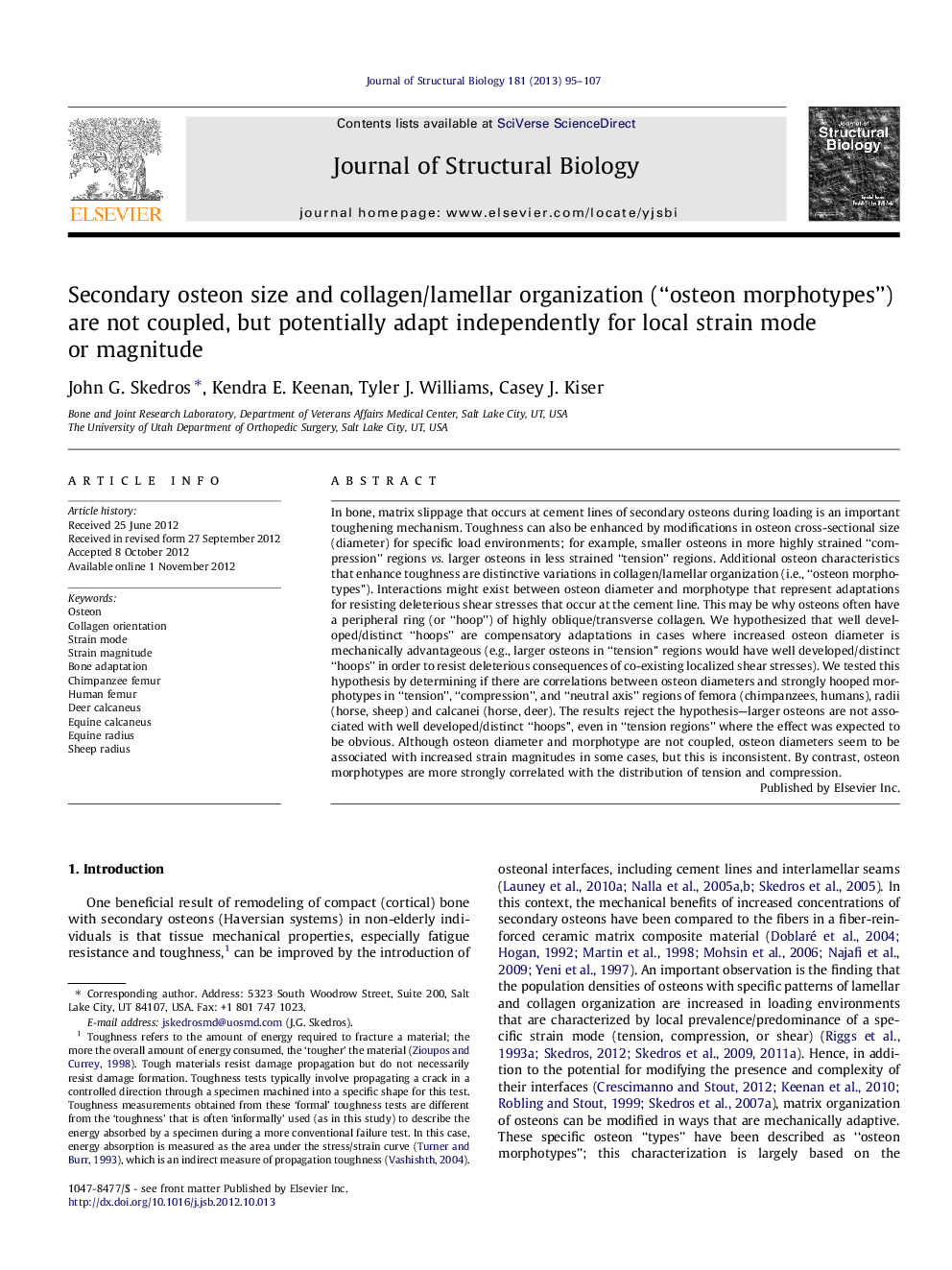| کد مقاله | کد نشریه | سال انتشار | مقاله انگلیسی | نسخه تمام متن |
|---|---|---|---|---|
| 2828594 | 1162738 | 2013 | 13 صفحه PDF | دانلود رایگان |

In bone, matrix slippage that occurs at cement lines of secondary osteons during loading is an important toughening mechanism. Toughness can also be enhanced by modifications in osteon cross-sectional size (diameter) for specific load environments; for example, smaller osteons in more highly strained “compression” regions vs. larger osteons in less strained “tension” regions. Additional osteon characteristics that enhance toughness are distinctive variations in collagen/lamellar organization (i.e., “osteon morphotypes”). Interactions might exist between osteon diameter and morphotype that represent adaptations for resisting deleterious shear stresses that occur at the cement line. This may be why osteons often have a peripheral ring (or “hoop”) of highly oblique/transverse collagen. We hypothesized that well developed/distinct “hoops” are compensatory adaptations in cases where increased osteon diameter is mechanically advantageous (e.g., larger osteons in “tension” regions would have well developed/distinct “hoops” in order to resist deleterious consequences of co-existing localized shear stresses). We tested this hypothesis by determining if there are correlations between osteon diameters and strongly hooped morphotypes in “tension”, “compression”, and “neutral axis” regions of femora (chimpanzees, humans), radii (horse, sheep) and calcanei (horse, deer). The results reject the hypothesis—larger osteons are not associated with well developed/distinct “hoops”, even in “tension regions” where the effect was expected to be obvious. Although osteon diameter and morphotype are not coupled, osteon diameters seem to be associated with increased strain magnitudes in some cases, but this is inconsistent. By contrast, osteon morphotypes are more strongly correlated with the distribution of tension and compression.
Journal: Journal of Structural Biology - Volume 181, Issue 2, February 2013, Pages 95–107